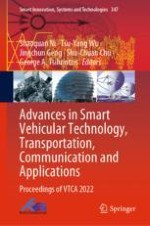2023 | OriginalPaper | Chapter
34. Density Peaks Clustering Algorithm for Manifold Data Based on Geodesic Distance and Weighted Nearest Neighbor Similarity
Authors : Xin-Yue Hu, Jia-Zheng Hou, Run-Xiu Wu, Jia Zhao
Published in: Advances in Smart Vehicular Technology, Transportation, Communication and Applications
Publisher: Springer Nature Singapore
Activate our intelligent search to find suitable subject content or patents.
Select sections of text to find matching patents with Artificial Intelligence. powered by
Select sections of text to find additional relevant content using AI-assisted search. powered by
